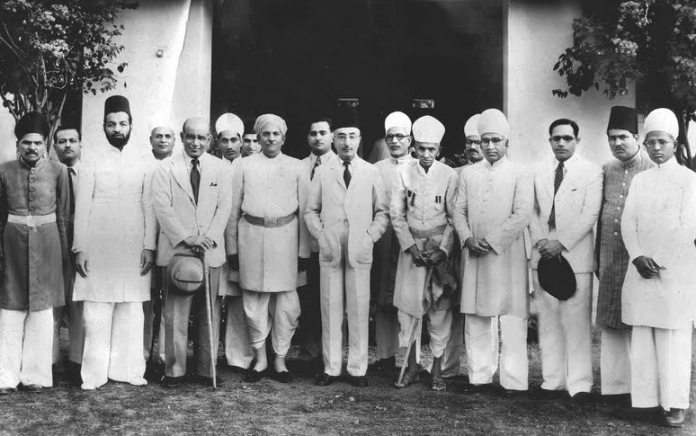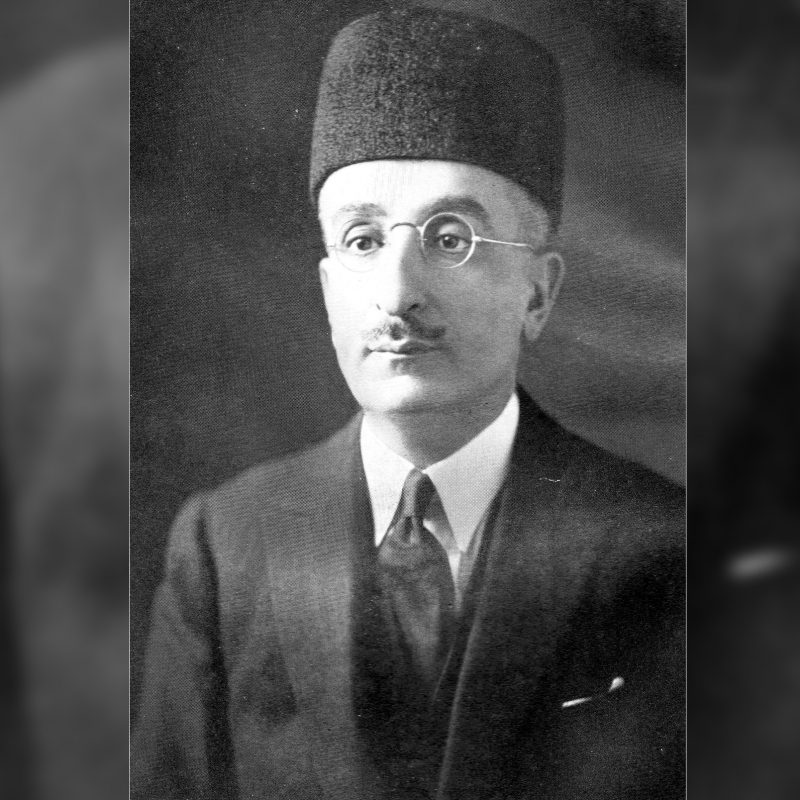Mirza Ismail was disapproving of the British’s improvement of Indian cities and towns, and greatly advocated for the need for gardens and parks. As part of the series ‘Reading a City’, Sahapedia explores Ismail’s thoughts on town-planning and his conflicts with bureaucracy. (Photo Courtesy: Padmanaganath/Wikimedia Commons)
Between 1926 and 1948, Mysore, Bangalore, Hyderabad and Jaipur enjoyed the attention of ‘serial Diwan’ Mirza Ismail. Born in 1883 to Persian parents, Ismail grew up in Bangalore, where he would return in his final years, passing away in 1959.
From the age of 43, Mirza Ismail was appointed as diwan successively by the Maharaja of Mysore (1926–41), the Nizam of Hyderabad (1942–46) and the Maharaja of Jaipur (1946–47). These rulers, like the Mughal badshahs, respected and honoured their engineers and townscapists. Mirza Ismail was to them what Ali Mardan Khan, the brilliant Persian engineer who laid out the plans for the Lahore and Delhi canals, had been to Shah Jahan.
Also read | Moving Beyond Metropolis
In Jaipur, the ruler commemorated him by naming a road after him, just like architect Edwin Lutyens’ engineers Hugh Keeling and Alexander Rouse had two major roads in New Delhi to their names (later changed to Tolstoy Marg and Deen Dayal Upadhyay Marg, respectively), even though Edwin Lutyens and architect Herbert Baker themselves were apportioned obscure lanes.
There were some princes, in whose states aesthetic values meshed with their eagerness to adopt innovations to improve urban and rural areas. But Mirza Ismail never felt it was enough. In My Public Life: Recollections and Reflections (published in 1954), he wrote“Administrations in India, with hardly any exception, have taken little or no interest in the improvement of their cities and towns; the villages, of course, need hardly be mentioned. Look at the great open spaces in crowded London – or in Paris. How many cities in India can boast of such parks? The municipalities are apt to spend their income, not on sanitation and the necessary amenities of life, but on educational institutions which it is the duty of the States’ Governments to provide. Public parks and private gardens may not be the most important amenities, but they are necessary to a full and happy life. The beautification of our towns and cities must be a continuous process . . . Unfortunately, just as nature abhors a vacuum, so do our municipalities abhor open spaces. They are not satisfied until all are built upon . . . It is to my mind obligatory for the administration to provide for the recreation and enjoyment of the people, especially the poorer classes, and enable them to enjoy themselves without expense. I have tried to do this wherever I could — in Mysore, Jaipur and Hyderabad.” [1]

Making Bangalore Beautiful
If M. Visvesvaraya, as Diwan of Mysore (1912–19), made Bangalore (now Bengaluru) an industrial city, then Mirza Ismail made it a beautiful one, with the Lalbagh and the streets lit by chandelier lamp posts. An interesting story about him goes that he did not simply glance around to check that if things were in good condition – he would lift the corner of a carpet to see if the floor had been swept. Mysore still proudly flaunts the label of ‘The Garden City of India’.
His brief spell in Jaipur wrought a civic revolution. An article in The New York Times in 1942 remarked that Jaipur had been a picture of neglect, but after the two years of Mirza Ismail’s sojourn, it was “more thoroughly transformed and improved than New York after Robert Moses got through with it.’ (Robert Moses, a contemporary of Mirza Ismail, was himself compared to Baron Haussmann, who transformed Paris in the 1860s). “Reconstruction, new parks, new buildings, restorations and improvements of all kinds are now going on at an amazing pace for India. The city swarms with workers as busy as bees,” [2] Ismail wrote in his book.
Related | Native Roofing Systems of South India: Processes and Material Heritage
He continued, “Money is meant to be spent reproductively, not to be hoarded. If I had not constructed the new offices and new bungalows and made many other improvements in Jaipur, it would probably not have been chosen under the new dispensation as the capital of Rajasthan.” [3]
The illustrious photographer Cecil Beaton, after visiting Jaipur, spoke highly of Ismail in his praise for the city: “Nowhere else in the world have I seen such brilliant and robust colours used to produce an effect so refined and subtle. Sir Mirza is the arch-enemy of corrugated iron sheets, brass bands (Indian) and of almost everything else that is crude and vulgar. The money he spends is put into circulation and is used as a means of getting rid of unhygienic conditions and sources of disease. Already the metamorphoses he has achieved in a short time are incredible, but his plans are as countless as his inspirations.” [4]
But Mirza Ismail was too astute a person not to see the writing on the wall. “Governments in the East,” he reflected, “do not enjoy the confidence and respect of the public they serve. Our countries so easily become the paradise of the professional politician.”
This article is the seventh of a nine-part series on Reading A City by Dr Narayani Gupta on The Print.
Notes
[1] Mirza Ismail, My Public Life: Recollections and Reflections (London: George Allen and Unwin, 1954), 48.
[2] Ibid., 81.
[3] In Jaipur, the Diwan was addressed as Premier.
[4] Mirza Ismail, My Public Life: Recollections and Reflections (London: George Allen and Unwin, 1954), 84. Also, Cecil Beaton’s article on Jaipur in Vogue in 1943.












